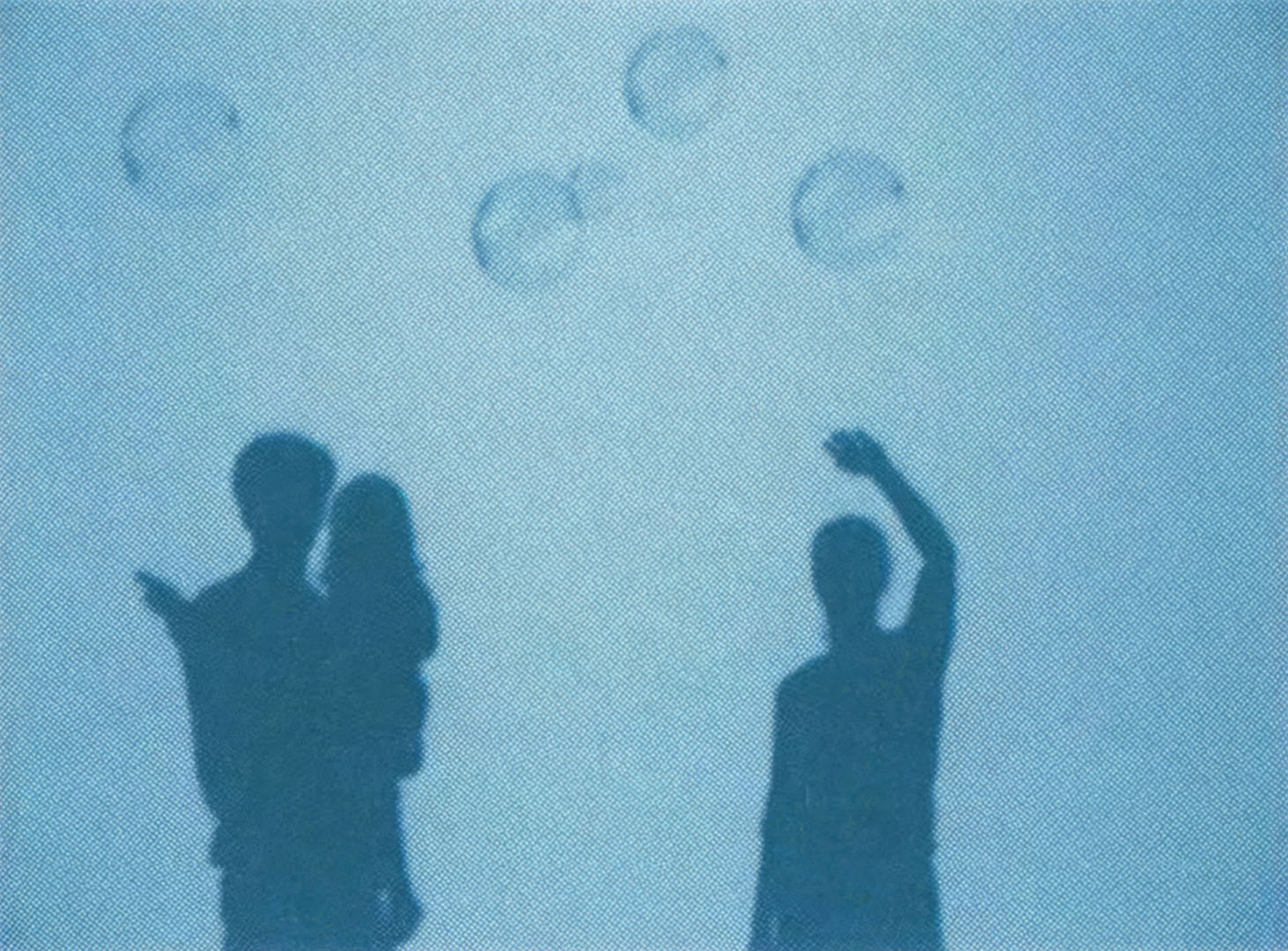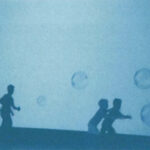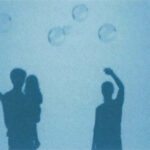“Bubbles” by Wolfgang Muench, Kiyoshi Furukawa
Title:
- Bubbles
Artist(s) and People Involved:
Exhibiting Artist(s):
Symposium:
Venue(s):
Artist Statement:
Interacting with virtual bubbles is quite simple …You just walk in front of the projectors light beam and cast your shadow onto the projection screen. The bubbles will recognize this shadow and bounce off its outlines, at the same time emitting certain sound effects. By moving your body and its resultant shadow you can play with these bubbles and the sound composition.
In a subtle manner, the work addresses the aesthetics of interaction on several levels: There is the body itself, which is usually left out when it comes to human-computer-interaction. In ‘bubbles’, it is central – users interact with the work’as’ bodies: The concrete body outlines on the screen become a means of interaction. It’s the body’s shadow – a cultural icon in its own right – which is being used as an analog ‘interfacing device’ to interact with a completely digital world of its own, the simulated objects on a projection screen. The data projector, the spectator’s body, and the screen itself serve as an ‘analog computer’ that computes the size of the shadow on the screen; the distances and spatial relationships of these elements crucially contribute to the overall experience of the work. Finally, there is the simulation algorithm itself that defines the completely artificial, two-dimensional world of the screen.
While the technical requirements are in fact moderate and the setup relatively simple, ‘bubbles’ also displays illusionist qualities in that the ‘story’ is obvious while the way it’s done remains oblique. Spectators learn how to interact with the system very quickly and get involved in dancing, playing, and other kinds of odd behaviour, while the ‘how’ question often remains unresolved.
Computer simulations and shadows share the property of a certain irreality; ‘bubbles’ celebrates the encounter of these two deficient reality modes: the traces of solid bodies meet the fleeting results of program code, the latter being the equivalent of an ‘essence’ in advanced information societies.







